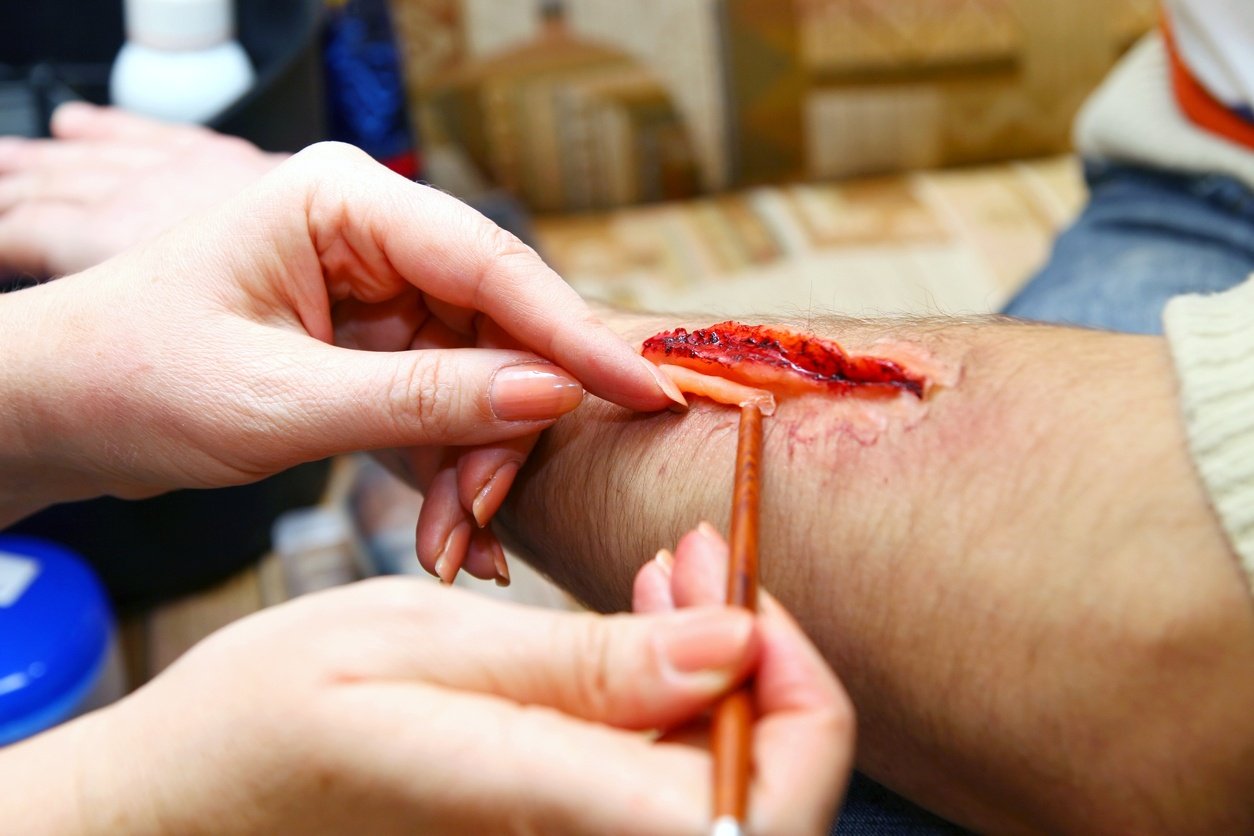

This is a guest post by Bobbie Merica, the CEO and founder of Moulage Concepts Inc., a global moulage company specializing in training, supplies, and wound customization. Bobbie is a medical/trauma moulage expert and author.
We all know the saying “Practice makes perfect.” But in my experience, I’ve learned that a more true sentiment is: Practice makes permanent.
When we practice imperfectly, wrong learning takes place and becomes internalized. The idea of creating realistic, immersive training as a powerful learning tool for engaging participants has been in the mainstream for years.
Realistic, immersive, interactive educational scenarios contribute to:
- Greater success in the field
- Higher levels of critical thinking
- Enhanced learning
- Fewer misdiagnosed patients
- Increased student engagement
- Successful differential diagnosis development
- A faster rate of response once skill sets have been established
Most of us are trying to do more with less. Less money, less time, less support staff. Moulage is still considered a luxury. We are hesitant to add one more step to a seemingly overburdened system.
For a clearer understanding of your team’s competencies, skill sets, and communication, moulage should be more than just a theatrical component we pull out of the closet once a year for a large-scale drill. Far more evidence supports routine use of simulation in the day-to-day education of staff for high-frequency/ high risk encounters than there is in its use in mock disasters, under mock circumstances with a "fully prepared-on-drill-day" mock staff. We need a new paradigm that enables us to use realistic moulage skills for realistic patients that are seen, treated and cared for by realistic staff.
While we acknowledge moulage has many benefits, it still can be difficult to find the resources to build realism into every training scenario due to time, budgetary, and skill constraints.
Quick Tricks to Build Moulage into Training
Have a vision
If you can't see it, you can't convey it. Tactical, emergency, pre-hospital, medical responders and infection control professionals rely on what is seen, felt, heard, and even smelled to indicate their course of action.
Step away from the "wow" factor
We all love a good "wow" moulage moment. It speaks to our skills and impresses our colleagues, but it can be time and/or budget intensive. Much like the scenario where you start with a vision, it’s vital to focus on the end result. For example, a simulated patient being assessed for smoke inhalation doesn’t need to present with full thickness burns. Incorporating quick and cost-effective symptoms such as cough, hoarseness, smoke odor, and mock "soot" in the lower nares effectively conveys the degree of injury and level of assessment by responder. The truth is, we never miss the “big stuff”. It is the subtle clues that pass undetected through our assessments.
Prep your materials
Pre-make wounds, pus, secretions, and bodily fluids so they are ready to use and may be converted quickly. The simulation industry has met the demand for pre-made products, but plenty of free resources exist for creating your own, including step-by-step instruction, tips, and recipes.
Challenge yourself
As experts in the field, you already know what you would be looking for while assessing the patient. That is where your moulage should start: telling the story that strengthens the educational scenario. If you've ever had to say "just pretend...." that is where moulage could have carried the story.
Educational moulage follows simple techniques, uses cost effective products, and supports our scenarios. Using it gives teams an opportunity to establish baselines, identify shortcomings, and mitigate risks. We need to recognize where additional education is required and develop allocation plans for future dollars and resources.
High Fidelity Training Realism Workshops are available at: www.moulageconcepts.com/training.
For moulage supplies, see our Moulage department at www.PocketNurse.com.
Follow Moulage Concepts on Twitter (@MoulageConcepts), Facebook, and LinkedIn.






